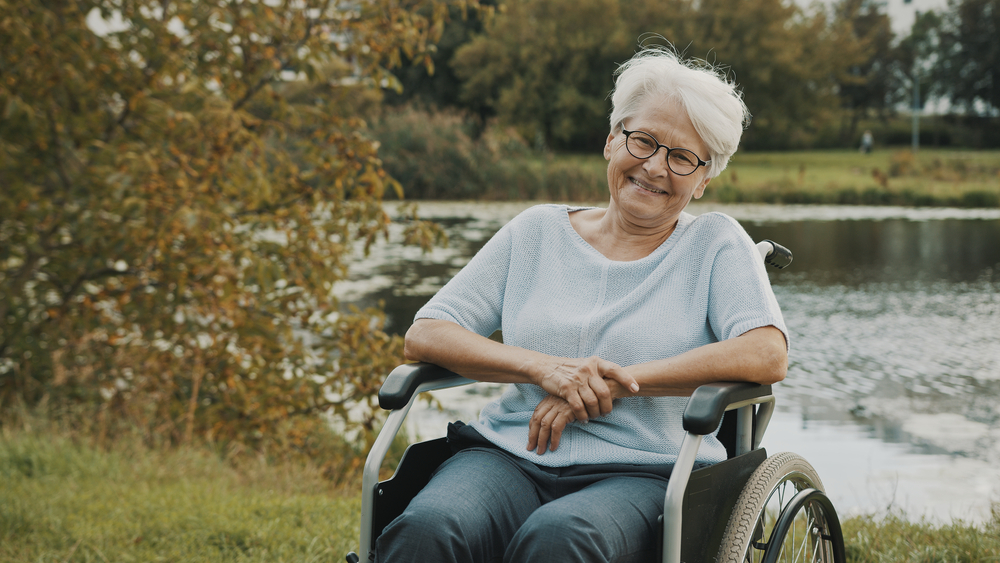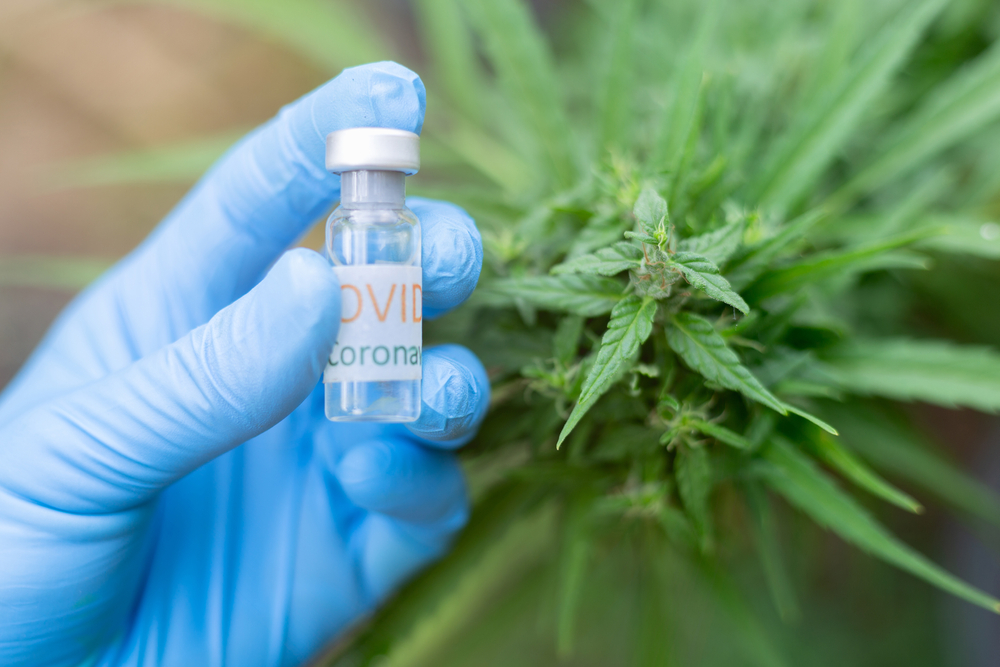The patient who starts chemotherapy is faced with two scenarios: on the one hand, there is the hope of starting treatment after discovering the disease; on the other hand, chemotherapy itself can bring several side effects, which not infrequently cause more symptoms than the cancer itself, increasing suffering.
Among the main undesirable effects of chemotherapy listed by the Instituto Nacional do Câncer (Brazilian Cancer Institute) are weakness, diarrhea, weight loss or gain, lesions in the mouth mucosa, hair and body hair loss, nausea, vomiting and dizziness. There are several studies that seek to find alternatives beyond the usual medications, which often fail to reduce these symptoms. Among the most recent are those that explain how cannabinoid derivatives and chemotherapeutic drugs interact, benefiting cancer patients.
What is the therapeutic potential of cannabinoid derivatives in patients on chemotherapy?
Since 1986, the U.S. regulatory body Food and Drug Administration (FDA) has approved the use of Dronabinol®, a synthetic THC for oral administration for the treatment of nausea and vomiting in patients undergoing therapy with chemotherapy drugs.
Another synthetic THC, Nabilone, has also been approved in the United States and Canada for the treatment of nausea and vomiting associated with chemotherapy.
>>> Read here the article Cannabis and Cannabinoids (PDQ®): Health Professional Version.
Both drugs are also recommended by the American Society for Clinical Oncology (ASCO) when symptoms of nausea and vomiting are resistant to usual therapies.
>>> Check out the paper Cannabis and Cannabinoids (PDQ®): Health Professional Version.
According to the article Cannabinoids for nausea and vomiting in adults with cancer receiving chemotherapy, estudos que comparam o uso de canabinoides a placebos e a anti-eméticos convencionais em adultos em tratamento quimioterápico mostram que mais pacientes informam a ausência completa de vômitos e a ausência completa de náuseas e vômitos quando recebem derivados canabinoides em comparação a placebo. Além disso, mais pessoas afirmam preferir os canabinoides no lugar de placebo e de proclorperazina.
>>> Read at Cannabinoids for nausea and vomiting in adults with cancer receiving chemotherapy.
The systematic review Cannabinoids for control of chemotherapy induced nausea and vomiting: quantitative systematic review studies comparing the use of cannabinoids with placebos and conventional antiemetics in adults undergoing chemotherapy show that more patients report complete absence of vomiting and complete absence of nausea and vomiting when receiving cannabinoid derivatives compared to placebo. In addition, more people say they prefer cannabinoids over placebo and prochlorperazine.
>>> Read the article Cannabinoids for control of chemotherapy induced nausea and vomiting: quantitative systematic review.
In Germany, Dronabinol® is supplied as a commercial product in options of 2.5mg, 5mg or 10mg, and also as drops or in the form of capsules. To purchase it, you need a medical prescription. In 2017, a legislative reform that allowed the cultivation of cannabis for medicinal purposes in the country was unanimously approved in the German parliament – check the news published in the Deutsche Welle (DW) newspaper.
Cannabis and chemotherapy drugs: antiemetic action
Studies involving cannabis in the context of the use of chemotherapeutic drugs bring positive results, especially with regard to the control of nausea and vomiting. In FioCruz technical report on the use of Medicinal Cannabis as an antiemetic effect in cancer treatment, 12 systematic reviews on the subject were identified. The products most frequently evaluated were formulations based on synthetic THC Dronabinol and Nabilone – which, in general, were compared to placebo or Prochlorperazine.
As the document itself highlights, the literature indicates the efficacy of cannabinoid derivatives as antiemetics when compared to placebos or other antiemetics, especially prochlorperazine.
>>> Check the technical report The use of Cannabis Medicinal as an antiemetic effect in cancer treatment.
Other benefits of medical Cannabis for cancer patients
In addition to the proven antiemetic action of THC, medicinal Cannabis can contribute to the well-being of cancer patients in other ways..
Around 50% of people with cancer have neuropathic pain either because of the disease itself or because of the treatment. Although not associated with risk of life, the symptoms of peripheral neuropathy induced by chemotherapy have a significant impact on the quality of life of cancer patients and can even influence patient compliance with antineoplastic treatment.
The current pharmacological options for the treatment of peripheral neuropathy have advanced very little in recent years, and often bring side effects, which further worsen the quality of life of these patients.
>>> See articles Chemotherapy-induced peripheral neuropathy: review for clinical practice and Care After Chemotherapy: Peripheral Neuropathy, Cannabis for Symptom Control, and Mindfulness.
The European Pain Federation and the Canadian Pain Society have recently published papers positioning cannabinoid derivatives as a third-line treatment for neuropathic pain. Getting ahead of fourth-line agents like methadone and anticonvulsants like lamotrigine.
>>> Read in European Pain Federation (EFIC) position paper on appropriate use of cannabis-based medicines and medical cannabis for chronic pain management and Pharmacological management of chronic neuropathic pain: revised consensus statement from the Canadian Pain Society.
Cannabis-based products demonstrate great therapeutic potential not only in the treatment of chemotherapy-induced peripheral neuropathy, but also in the context of nausea, vomiting, reduced appetite, weight loss, sleep and mood disorders and impairment in social relationships, which often accompanies the cancer patient.
Although Cannabidiol and Tetrahydrocannabinol are the two best known and most exploited chemical elements so far, the Cannabis plant brings together more than 500 chemical compounds, with their own therapeutic potential..
Therefore, as we mentioned previously, several and relevant benefits can be observed in the use of cannabinoid derivatives in cancer patients, such as:
- Pain relief, especially neuropathic pain;
- Feeling of relaxation and well-being;
- Appetite stimulation;
- Sleep induction.
If you are interested in incorporating medicinal Cannabis into your therapeutic arsenal safely and effectively, join our global community of studies in Endocannabinoid Medicine, which joins scientific knowledge and practical experience in a highly qualified way.
WeCann Academy is committed to your learning journey and offers an International Certification in Endocannabinoid Medicine. Contact us for further information!
References
Häuser W, Finn DP, Kalso E, Krcevski-Skvarc N, Kress HG, Morlion B, Perrot S, Schäfer M, Wells C, Brill S. European Pain Federation (EFIC) position paper on appropriate use of cannabis-based medicines and medical cannabis for chronic pain management. Eur J Pain. 2018 Oct;22(9):1547-1564. doi: 10.1002/ejp.1297. Epub 2018 Sep 4. PMID: 30074291.
Hesketh PJ, Kris MG, Basch E, Bohlke K, Barbour SY, Clark-Snow RA, et al.
Antiemetics: American Society of Clinical Oncology clinical practice guidelineupdate. J Clin Oncol. 2017.
Moulin D, Boulanger A, Clark AJ, Clarke H, Dao T, Finley GA, Furlan A, Gilron I, Gordon A, Morley-Forster PK, Sessle BJ, Squire P, Stinson J, Taenzer P, Velly A, Ware MA, Weinberg EL, Williamson OD; Canadian Pain Society. Pharmacological management of chronic neuropathic pain: revised consensus statement from the Canadian Pain Society. Pain Res Manag. 2014 Nov-Dec;19(6):328-35. doi: 10.1155/2014/754693. PMID: 25479151; PMCID: PMC4273712.
PDQ Integrative, Alternative and CTEB. Cannabis and Cannabinoids (PDQ®):
Health Professional Version. PDQ Cancer Information Summaries. 2002.
Ramos, Maíra Catharina, Elias, Flávia Tavares Silva. The use of Cannabis Medicinal as an antiemetic effect in cancer treatment. Fiocruz Brasília. 2020.
Smith LA, Azariah F, Lavender VTC, Stoner NS, Bettiol S. Cannabinoids fornausea and vomiting in adults with cancer receiving chemotherapy. Cochrane Database Syst Rev. 2015.
Teoh, Deanna, Smith, Thomas, Song, Mihae, Spirtos, Nick. Care After Chemotherapy: Peripheral Neuropathy, Cannabis for Symptom Control, and Mindfulness. American Society of Clinical Oncology Educational Book. 2018.
Teoh, Deanna, Smith, Thomas, Song, Mihae, Spirtos, Nick. Chemotherapy-induced peripheral neuropathy: review for clinical practice. Revista Dor. 2018.
Tramèr MR, Carroll D, Campbell FA, Reynolds DJ, Moore RA, McQuay HJ. Cannabinoids for control of chemotherapy induced nausea and vomiting: quantitative systematic review. BMJ. 2001.





